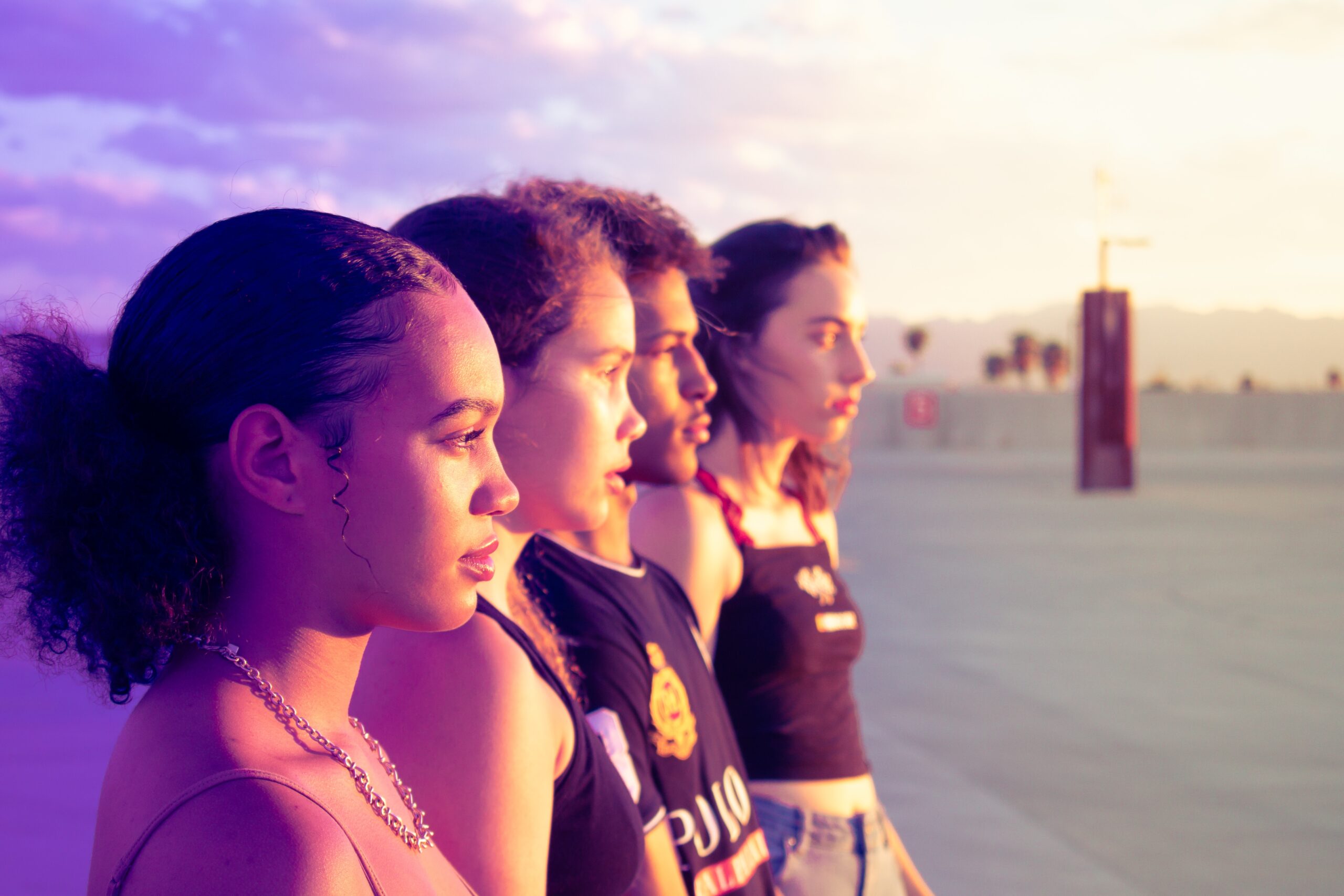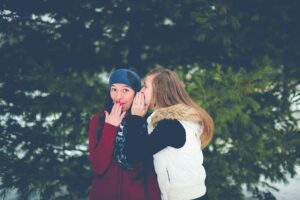By Prof Tony Attwood and Dr Michelle Garnett
Last week we discussed the friendship challenges that autistic children can commonly encounter, and programmes that can help. In our blog this week we look at the challenges faced by our autistic teenagers and discuss how to equip a teenager with social understanding to manage these challenges. We have found that autistic teenagers make very good friends, they typically have exceptional personality qualities, such as loyalty, honesty, compassion, integrity, a sense of social justice, open-mindedness and a good sense of humour. The difficulty is in understanding non autistic people.
What are the challenges faced by autistic teenagers?
Non-autistic teenagers start to value greater disclosure of thoughts, feelings and experiences and expect more emotional understanding and support in friendships. By contrast, autistic teenagers refer to self-disclosure, empathic understanding and affection less often as defining characteristics of friendship (Platos & Pisula, 2021). They also have difficulty perceiving, following, and responding to the covert social rules of adolescent friendship; understanding and managing conflict; and they tend to experience anxiety about being in a group and feeling watched and potentially judged by multiple people, which can lead to increased social difficulty (Cresswell, Hinch and Cage 2019).
A study of adolescent autistic girls confirmed how exhausting socialising can be, especially in groups and coping with ‘too many opinions’ and feeling they needed to act as a peacemaker when conflict and disagreements occurred within a friendship group (Foggo & Webster, 2017). Adolescent autistic boys can have difficulty understanding and knowing how to respond to the joking behaviour of their male peers. They can misinterpret intentions and become confused and agitated (Sedgewick, Hill and Pellicano 2018), increasing peer alienation.
During their high school years, autistic adolescents can feel deeply lonely and yearn for connection with a group of peers. They are not able to rely on intuitive abilities in social situations and often must rely on cognitively processing social information, which is exhausting. Peers may criticise them for making social errors, and they invariably lack a best friend to provide social guidance and compliments rather than criticism for their friendship abilities. There can be an acute and distressing recognition of not being popular, as illustrated in the following quotations: I wasn’t rejected but did not feel completely included, and I was supported and tolerated but not liked. They may blame themselves or their being autistic for peer rejection, which inevitably affects self-esteem, self-identity, mood, and perception of autism. There will probably be anxiety about making a social mistake, as described in the quote: I live in constant fear of performance anxiety over day-to-day social encounters. Before falling asleep, the autistic adolescent may review and ruminate over the social experiences of the school day, which may lead to a conscious retreat into solitude: I’d rather just be alone, but I can’t handle the loneliness.
In the yearning for social connection and friendship, autistic adolescents may be accepted by marginalised groups of teenagers that engage in activities and interests that cause concern for parents. This can include peers who engage in alcohol and drug use, are developing eating disorders or exploring being an alternative gender. The group welcomes and ‘adopts’ the autistic teenager, who has an enjoyable role of collecting, collating and communicating information from the Internet, which is valued by the group.
In their teenage years, autistic adolescents may engage in camouflaging their autistic characteristics by masking and compensation strategies to be accepted by their peers and to make friends (Hull et al. 2017). Masking involves creating an alternative persona based on their observation and analysis of the social behaviour of their peers, and compensation may include teenage autistic girls preferring the friendships of boys who do not tend to have the complex and subtle expectations of friendships that occur between girls.
In our clinical experience, we increasingly recognise the value of having an autistic friend. They may find each other on the periphery of social activities or during lunchtime or after-school interest groups such as robotics, computer programming, science projects, playing music and singing together, or simply sitting beside each other drawing or reading.
Programmes to encourage friendship abilities
There are several evidence-based programmes to encourage friendship abilities. Encouraging friendship abilities can equip the person to understand others and develop skills to navigate the social world with more success. The person can also learn how to be their own best friend, which is an important skill for a happier life.
Elizabeth Laugeson originally developed the PEERS programme for autistic adolescents and young adults (Laugeson et al., 2015). The programme includes components on developing and maintaining friendships, conversation skills, electronic communication, appropriate use of humour and romantic relationships and dating etiquette. A recent meta-analysis of research on the PEERS programme found moderate to large effects across measures and informants, with the largest effect in social knowledge, then social functioning and the smallest in the frequency of get-togethers.
The Healthy Relationships on the Autism Spectrum (HEARTS) programme is an online manualised programme (Rothman et al., 2022). Each 90-minute class is taught by one non-autistic and one autistic team teacher, with participants undertaking the programme in the privacy of their own homes. The programme includes themes such as the motivation to keep the relationship going as described in the quotation: My challenge is actually staying in touch and making the effort to actually feel like I want to talk to them, emotional scars from previous friendships, self-disclosure and emotional intimacy, the ‘chemistry’ of friendship, distinguishing between ‘healthy’ and unhealthy’ friendships and setting social boundaries and trust.
Parents and teachers recognise the popularity of Lego and Minecraft for autistic adolescents. Daniel Le Goff has developed and evaluated Lego-based therapy to encourage social and friendship skills (LeGoff et al., 2017). Dundon and Scott (2019) have written a manual describing how Minecraft can be used to teach autistic teenagers social skills. Jessica Kingsley Publishers has also published several books by Jennifer Cook that explore and encourage social abilities for autistic adolescents. We also recommend the Social Thinking programmes developed by Michelle Garcia Williams and Pamela Crooke, with more information at www.socialthinking.com
Where to from here?
We have created two consecutive half-day presentations exploring autism and friendship. Both presentations describe friendship issues and how to help, with the morning focussing on children from 3-12 years old, and the afternoon focussing on adolescents. We designed the webcasts for parents, teachers, and professionals, including psychologists and speech pathologists who wish to support autistic children and teenagers to build connections with their peers.
ONLINE COURSE: Exploring Friendship in the Primary Years
ONLINE COURSE: Exploring Friendship in High School
References
APA (2022) Diagnostic and Statistical Manual of Mental Disorders-5 Text Revision. American Psychiatric Association
Attwood, T. (2006) The Complete Guide to Asperger’s Syndrome. London, Jessica Kingsley Publishers.
Baron-Cohen and Wheelwright, (2003) Journal of Autism and Developmental Disorders 33, 509–517.
Beaumont et al. (2021). Journal of Autism and Developmental Disorders 51, 3637-3650
Calder, Hill and Pellicano (2013) Autism 17
Chang Shih and Kasari (2016). Autism 20
Cresswell, Hinch and Cage (2019) Research in ASD 61, 45-60
Daniel and Billingsley 2010 Focus on ASD and other Developmental Disorders 25
Dean et al. (2014) Journal of Child Psychology and Psychiatry 55, 1218-1225
Dundon and Scott (2019) Teaching Social Skills to Children with Autism using Minecraft London, Jessica Kingsley Publishers.
Foggo and Webster (2017). Research in ASD 35
Head, McGillvray and Stokes (2014) Molecular Autism
Hull et al. (2017) Journal of Autism and Developmental Disorders 47, 2519-2534
Laugeson et al. (2015) Journal of Autism and Developmental Disorders 45
LeGoff et al (2017) How Lego-based Therapy for Autism Works Jessica Kingsley Publishers
Petrina, Carter and Stephenson (2014) Research in Autism Spectrum Disorders 8, 111-126
Platos and Pisula (2021) Research in ASD 81 101716
Rotherham-Fuller et al. (2010) Journal of Child Psychology and Psychiatry 51, 1227-1234
Rothman et al (2022) Autism 26, 690-702
Sedgewick, Hill and Pellicano Autism (2018)
Tripathi et al. (2022) Jr Autism and Developmental Disorders 52, 2610-2626
Wood-Downie et al. (2021) Journal of Child Psychology and Psychiatry 62, 922-936




